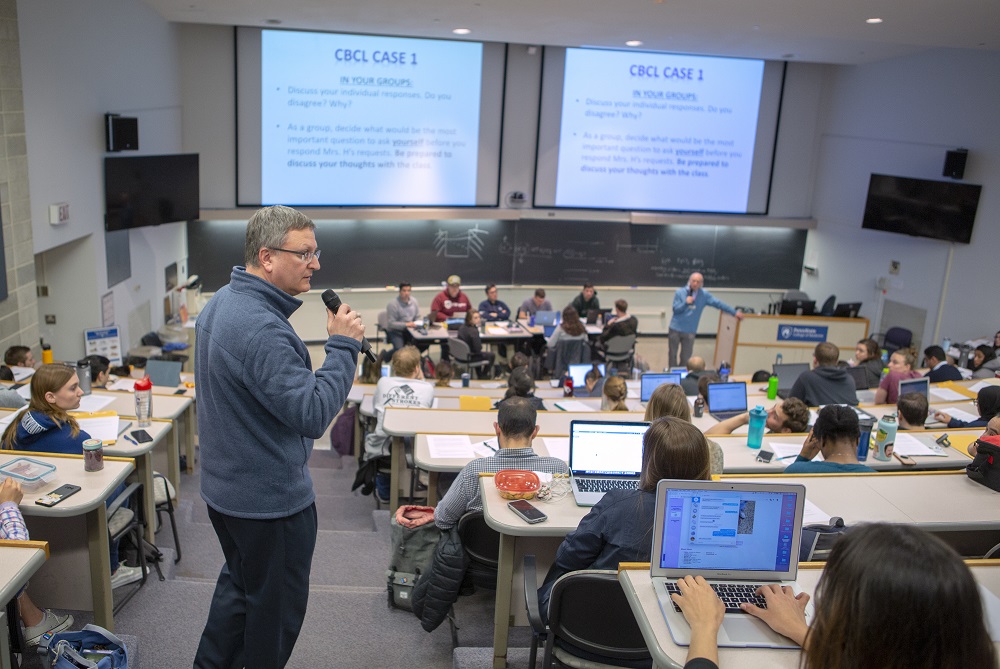Haidet, colleagues to study how arts, humanities elevate medical education

Dr. Paul Haidet, distinguished professor of medicine, humanities and public health sciences at Penn State College of Medicine, will work with other experts to compile information on how the humanities and arts are used in the training of health care professionals. Haidet’s work is part of a broader study by the Association of American Medical Colleges on how to integrate arts and humanities into medical education.
Penn State College of Medicine was the first medical school in the country to have a dedicated humanities department and is known for innovation in humanistic medicine. “We have a required humanities thread that runs through all four years,” Haidet said. “Students acknowledge that this is what will make you a better doctor. It turns a technician into a healer. Somewhere in the space between the fixer and healer is the humanities.”
Haidet and three researchers from the University of Western Ontario and Mount Saint Vincent University will lead a team to assess the current role of arts and humanities in medical education. They hope to identify common themes, gaps in knowledge and suggest standards to be included in medical curriculum.
“Building an impactful curriculum is all about strategy,” Haidet said. “There’s an opportunity to push our thinking about the utility of arts and humanities in medical education.”
Haidet teaches a course titled “Jazz and the Art of Medicine.” Throughout the course, fourth-year medical students learn to use jazz music as a metaphor for improvisational communication with patients. Students shared that their limited exposure to jazz and introduction to a new type of classroom instruction transformed their learning. Jazz music allowed the students to develop new and creative ways to communicate with patients.
“The hardest thing for doctors-in-training to grasp and learn is the ability to connect with the experience of patients,” Haidet said. “The arts and humanities is all about connection. It’s an entryway for people learning how to connect with others.”
Analyzing the intersection of arts and medicine isn’t new to Haidet. He and his colleagues published a review in 2016 that examined arts-based education and how it promoted learning in medical and other non-arts contexts. They learned that while studies had shown arts were good for promoting clinical skills and humanistic practice, medical schools lacked structure in their arts and humanities curriculum design.
Other contributors from Penn State College of Medicine include: Nancy Adams, assistant dean for foundational sciences; Rebecca Volpe, assistant professor of humanities; Claire de Boer, director of Center Stage Arts in Health; and Esther Dell, associate librarian. The analysis by Haidet and colleagues will help the Association of American Medical Colleges develop guidelines for arts and humanities inclusion in medical curricula.
If you're having trouble accessing this content, or would like it in another format, please email Penn State Health Marketing & Communications.
